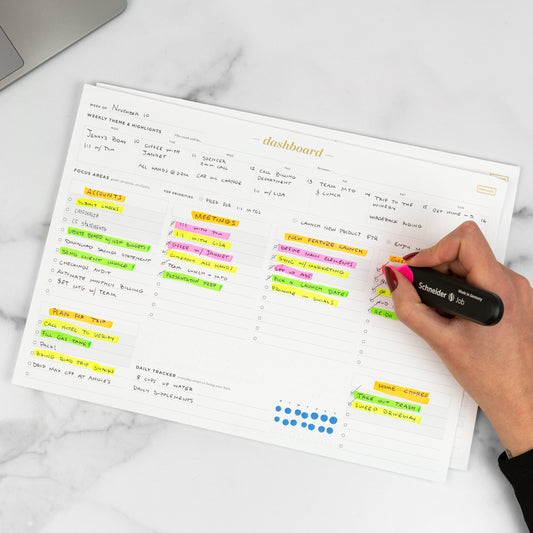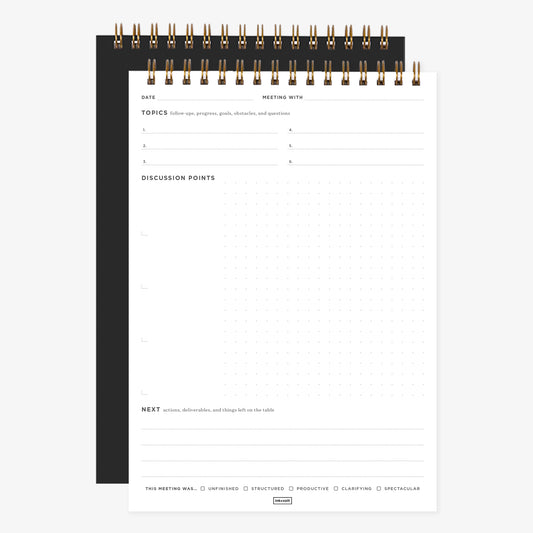Spring is a perfect time to clean and organize your house and give yourself a fresh, new start for the season.
And in these uncertain times, cleaning can feel so therapeutic and satisfying. Maybe it’s because cleaning gives you a sense of routine and structure. Or that the single, repetitive tasks give your brain a much-needed break. Or maybe it’s that the hard work you put in always yields positive results. Either way, a clean house feels so much more peaceful and welcoming to be in, and who wouldn’t want that?
Plus, cleaning your house is actually good for you. Sanitizing surfaces and clearing out allergens will benefit your immune system. And those gleaming kitchen counters, streamlined spaces, and the fresh scent of clean rooms and sheets will have you feeling calm and grounded.
Of course, it’s easy for chores to pile up and our living spaces to turn into disaster zones, quickly. So we’ve put together an easy and actionable weekly plan to help you clean your house. And with a solid action plan in place, you’ll save time and energy along the way, which means more time to lounge around in your clean and tidy abode.
Clean your house with zone cleaning
Just like with goal setting, you can make a cleaning project feel less overwhelming by breaking it down into simple, actionable steps and organizing your house by “zone.”
With zone cleaning, you commit to cleaning one room at a time. For example, you can start with your kitchen, then move onto your bathroom, and then the next room. You can do zone cleaning weekly or pick one day and tackle multiple zones at a time.
By sticking with one space and cleaning it from top to bottom, you’ll ensure that the entire space is clean and organized.
And you’ll feel such a sense of relief and accomplishment from finishing zone one, that it will keep you energized to keep going and cleaning the next zone.
Monthly cleaning challenge
Ink+Volt teamed up with Shira Gill, a professional home organizer and coach, to create a 30 day plan to help you kickstart your cleaning routine. Download the free worksheet here and do the assigned task for each day of the month. Why 30 days? They say it takes 30 days to build a habit so by committing to one small, task each day, you’ll be on your way to developing a regular cleaning routine.
Weekly cleaning plan
If you’re looking for a more long term cleaning schedule, here’s a weekly plan that you can incorporate, which is based on Shira Gill’s 30 day challenge.
Week 1: Kitchen
- Clean out fridge
- Organize utensils and tupperware
- Organize pots and pans
- Clean floors
- Sanitize surfaces
Week 2: Living Room
- Organize drawers
- Organize bookshelf
- Clear out hall closet
- Clear out junk drawers
- Recycle magazines and newspapers
- Organize board games
Week 3: Bedroom
- Clear nightstand
- Organize closet
- Organize dresser drawers
- Sort through clothes and donate or toss
- Vacuum rug
Week 4: Bathroom
- Clean shower
- Scrub toilet
- Wipe mirror
- Clean floors
Clean home maintenance tips
Now that you have your weekly cleaning schedule in place, here are some cleaning and organizing tips to help you maintain your tidy home.
Shira’s tips and tricks:
- Tip #1: Embrace negative space. Instead of adding more to your home, consider what you can subtract to elevate the aesthetic and create some breathing room.
- Tip #2: Go uniform. Invest in uniform storage bins and baskets to create a cohesive streamlined aesthetic that's easy on the eyes.
- Tip #3 Practice a 5-minute tidy before bed. Clear counters and surfaces, knock out the dishes, and reset your space so you can start fresh feeling good the next day.
Every item should have a “home.” Marie Kondo fans know that the organization expert is a big believer in having a home for your things. When an item doesn’t have a specific spot or assigned place in your home, clutter can accumulate. Dirty laundry ends up on the floor. Coins and pen caps on your coffee table. Documents all over your desk, etc.
“Homes” for your belongings can include:
- Catchall trays for keys, coins, random objects
- Hamper in every room, so no more dirty clothes on the floor
- Trash bins in every room
- Folders and trays for documents
- Baskets for blankets, games, magazines
Set aside 5-10 minutes a day to clean. Feel like your home is constantly in need of a massive cleanup? Then try incorporating a daily 5-10 minute cleaning “touch up” routine. This way, messes and clutter don’t pile up and you’re not reactively cleaning all the time. Incorporate this new habit by piggybacking off an existing routine. Clean the bathroom floor before you take a shower. Organize the kitchen while your coffee brews. Clear the entryway before you go for a run.
Keep tools/cleaning supplies nearby. “Atomic Habits” author James Clear talks about the importance of visual cues to help you adapt new habits. This is especially true for establishing a cleaning routine. To make it easier on yourself, keep cleaning supplies in accessible spots. That means no more hiding supplies in the back of the closet. The thought of lugging them out might psych you out. Instead, keep cleaning supplies under the kitchen sink or on an easy-to-reach shelf or behind the couch.
Make little tweaks for big impact. Sometimes, the simple act of making the bed can make a big impact and make the whole room look put together. Think about other small things you can do that will yield big results. Maybe that means decluttering your dining table or doing the dishes at night so you wake up to an empty sink or organizing books on your coffee table. These are all easy wins that will go a long way in making a tidy space.
Celebrate. Treat yourself for a job well done by lighting a new candle or making yourself a cup of tea or reading a book in your new, tidy nook. You earned it!
These guidelines are just a starting point so feel free to tweak these strategies to make them work for your space and schedule.









